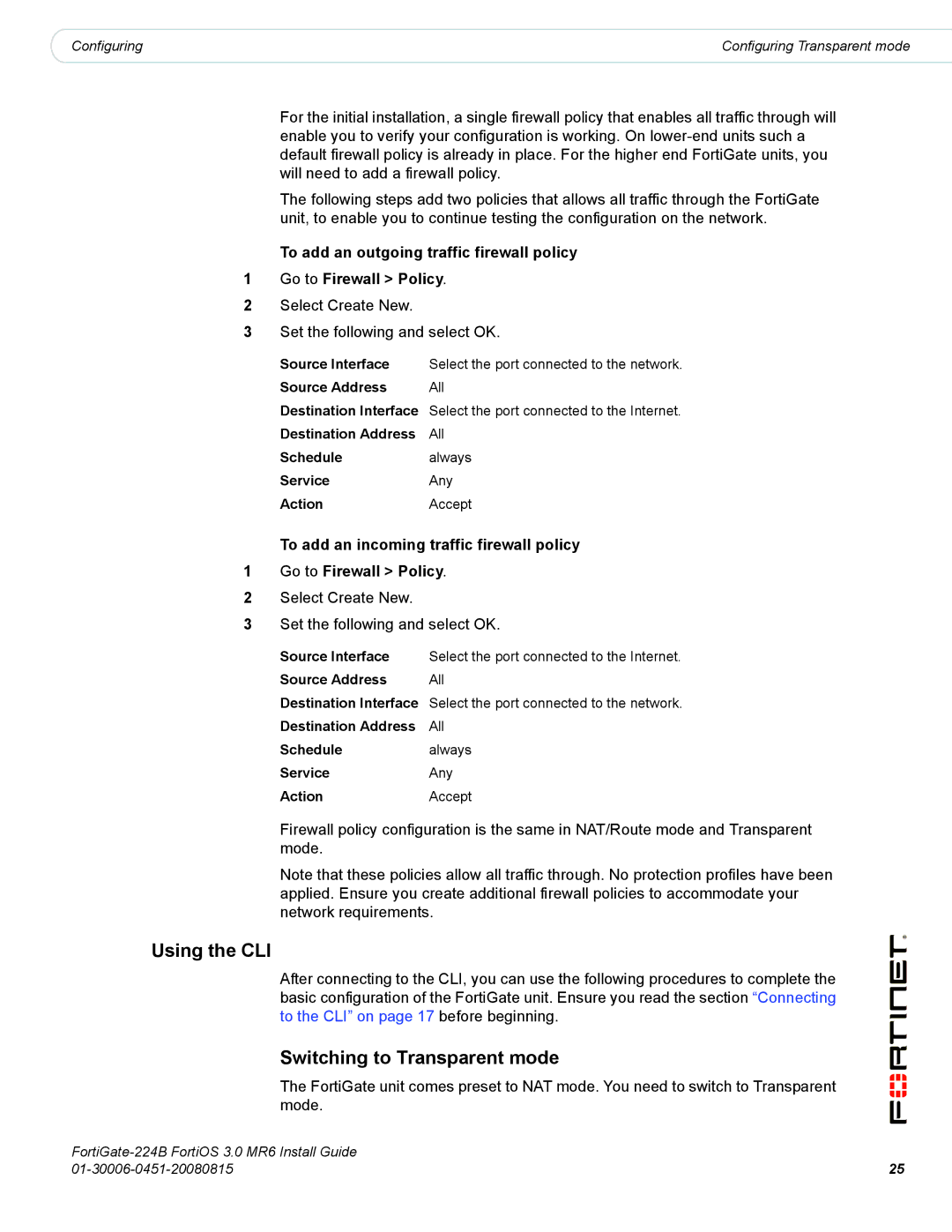
|
|
Configuring | Configuring Transparent mode |
For the initial installation, a single firewall policy that enables all traffic through will enable you to verify your configuration is working. On
The following steps add two policies that allows all traffic through the FortiGate unit, to enable you to continue testing the configuration on the network.
To add an outgoing traffic firewall policy
1Go to Firewall > Policy.
2Select Create New.
3Set the following and select OK.
Source Interface | Select the port connected to the network. |
Source Address | All |
Destination Interface | Select the port connected to the Internet. |
Destination Address | All |
Schedule | always |
Service | Any |
Action | Accept |
To add an incoming traffic firewall policy
1Go to Firewall > Policy.
2Select Create New.
3Set the following and select OK.
Source Interface | Select the port connected to the Internet. |
Source Address | All |
Destination Interface | Select the port connected to the network. |
Destination Address | All |
Schedule | always |
Service | Any |
Action | Accept |
Firewall policy configuration is the same in NAT/Route mode and Transparent mode.
Note that these policies allow all traffic through. No protection profiles have been applied. Ensure you create additional firewall policies to accommodate your network requirements.
Using the CLI
After connecting to the CLI, you can use the following procedures to complete the basic configuration of the FortiGate unit. Ensure you read the section “Connecting to the CLI” on page 17 before beginning.
Switching to Transparent mode
The FortiGate unit comes preset to NAT mode. You need to switch to Transparent mode.
| |
25 |
